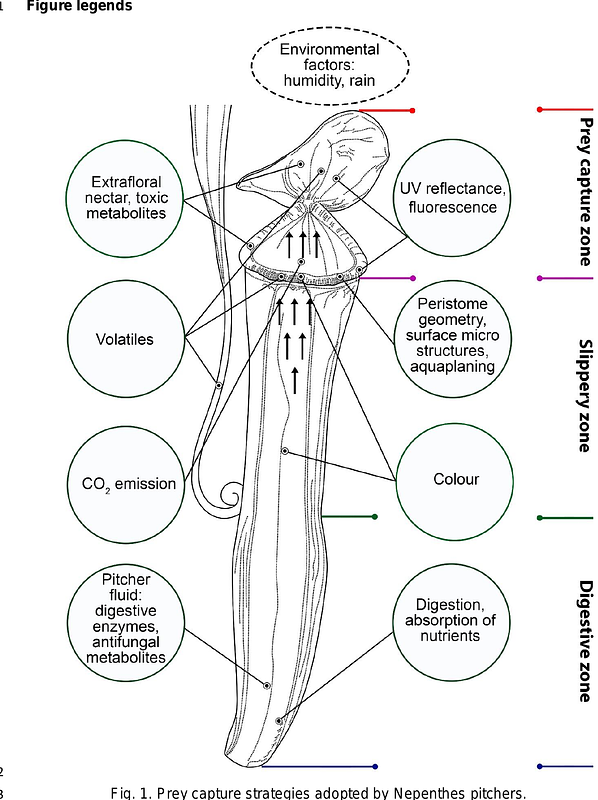Bait, not reward: CO2-enriched Nepenthes pitchers secrete toxic nectar

Bait, not reward: CO2-enriched Nepenthes pitchers secrete toxic nectar
Lathika, C. C.; Sujatha, G. B.; Thomas, G.; Johnson, A. J.; Viswanathan, G.; Varghese, T. S.; Mohamed, S.; Shereefa, L. A.; Baby, S.
AbstractNepenthes pitchers are leaf-evolved biological traps holding high levels of CO2 within them. Extrafloral nectar (EFN) secreted by Nepenthes pitchers has long been regarded as the major reward to the visiting arthropods, but its chemical constituents and their role in prey capture are least explored. Here we show that Nepenthes EFN is a toxic sugar mix devoid of key nitrogenous components (amino acids, proteins) and vitamin C. Fatty acids (cis-11-octadecenoic acid (C18:1), palmitic acid (C16:0), stearic acid (C18:0)) and their derivatives were detected in both N. khasiana peristome and lid EFNs. Both the nectars showed strong acetylcholinesterase (AChE) inhibition in vitro and in vivo. Bioactivity guided isolation revealed (+)-isoshinanolone, a naphthoquinone derivative, as the AChE inhibitor in Nepenthes EFNs. GC-headspace analysis showed the naphthoquinone, plumbagin, as the major volatile constituent in prey capturing regions of pitchers, along with the VOCs, (Z)-3-hexen-1-ol, 1-hexanol and acetoin. N. khasiana pitchers trap a wide spectrum of preys dominated by ants, whereas only limited herbivory was observed on its leaves and pitchers. Chemical (EFN, volatiles), gaseous (CO2), visual (colour, UV reflectance, fluorescence), physical (peristome geometry, surface microstructure, wettable surface-aquaplaning) and environmental (humidity, rain) factors effect prey capture in Nepenthes pitchers. These leaf-transformed traps with high growth rate and C:N ratio, reduced Rubisco activity, modified stomata, acidic pitcher fluid and absence of key nitrogenous metabolites are model systems displaying the effects of elevated CO2 within them. We testify that Nepenthes EFN is a toxic sugar bait which hinders the neuronal activity and flight of visiting arthropods. These unique traps adopt various deceptive strategies for prey capture, and our discovery abolishes the notion of Nepenthes EFN as a reward to the visiting ants and other arthropods.